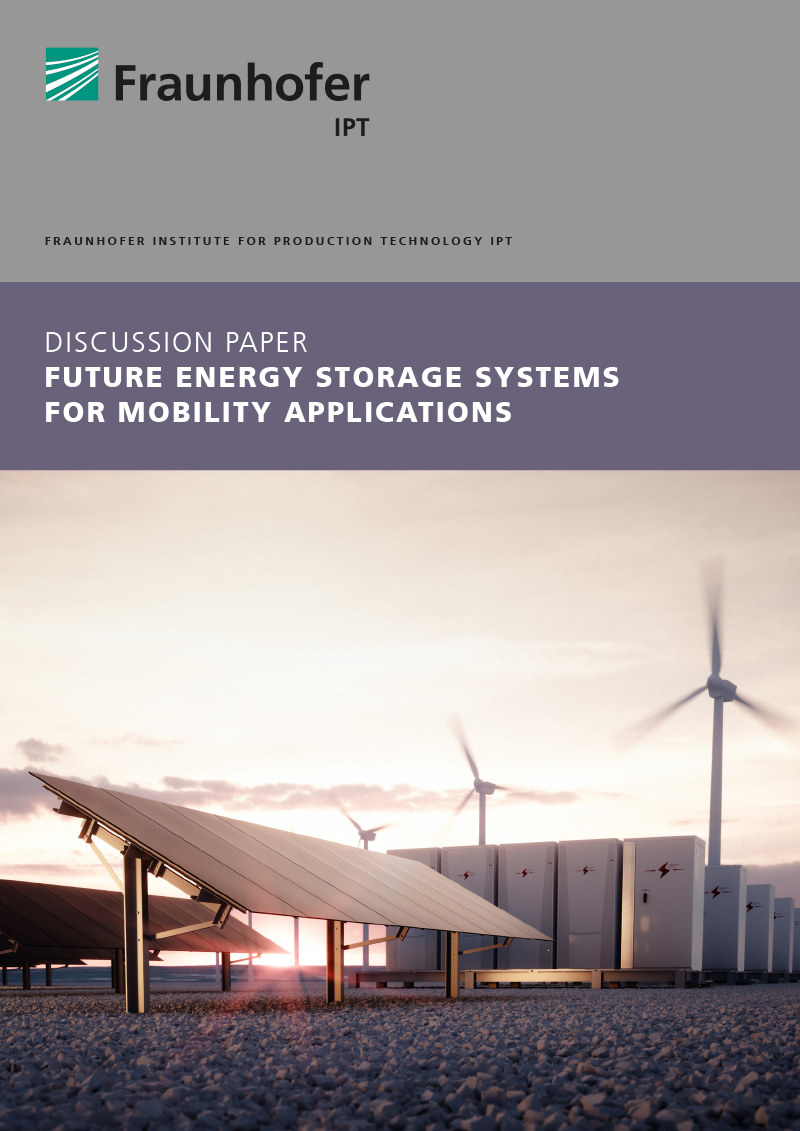Future energy storage systems for mobility applications
The increasing demand for energy storage solutions presents a huge opportunity for mechanical and plant engineering as well as the manufacturing industry. More and more OEMs are investing in the development and production of energy storage systems and electric drive trains. In order to facilitate the transition to zero emission energy consumption, further development of the technology and production of energy storage and conversion systems is required.
The Fraunhofer Institute for Production Technology IPT, with its more than 35 years of experience in applied research and development of manufacturing technologies and processes, is committed to contribute significantly to this transition. This study provides an insight into the most relevant energy storage technologies with regard to their principle of operation and design, their market potential and their manufacturing technology. On this basis, companies can make profitable decisions about new strategic alignment and investments. The given technological options for energy storage are assessed regarding their suitability for the application to electrification of vehicles. Due to their general suitability for the application to electric vehicles, Lithium-Ion Batteries and Fuel Cells are selected for a detailed profit/loss consideration.
This study shows that commercial vehicles like long-range buses and trucks, are means of transportation for which the Fuel Cell is a superior solution because of technical as well as economic aspects. The main hurdles for Fuel Cell market diffusion concerning these applications are currently high production costs and a TRL below 9.Advancement of manufacturing technology and up-scaling are efficient means for cost reduction and thereby for achieving market distribution. An analysis of the production process, consisting of component manufacturing as well as assembly processes, is presented as a basis for technical development towards cost-efficient Fuel Cell applications. The Bipolar Plate and the Membrane Electrode Assembly are the main cost drivers and are thus the most important components to concentrate cost reduction efforts on. Moreover, current challenges and potential levers for cost reduction alongside with further optimization potential are discussed. Here, the expertise of Fraunhofer IPT is placed in its proper relationship to these needs. Finally, an outlook on a following, second Discussion Paper The Relevance of Fuel Cells for Mobility Applications is presented.

Hier können Sie sich unser Discussion Paper als PDF kostenlos herunterladen.
Gerne informieren wir Sie in Zukunft, sobald neue Studien erscheinen und senden Ihnen auf Wunsch weitere Informationen zu unseren Forschungsthemen und unserem Leistungsangebot zu.